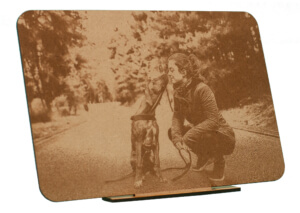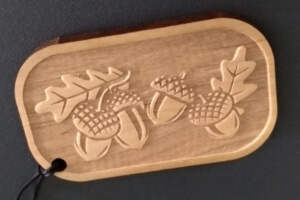Things to keep in mind when laser engraving wood
- The color of the wood can influence the contrast and visibility of the engraving. For one thing, lighter woods, such as maple or spruce, can provide a strong contrast for dark engravings. On the other hand, with darker woods, such as walnut or mahogany, the engraving could be a color more similar to the wood, generating a less strong contrast. Additionally, the color of the wood can change with time and light exposure, which can affect the appearance of the engraving in the long term.
- The hardness of the wood contributes to the quality of the engraving. Hardwoods, such as oak, walnut, cherry, or maple, produce cleaner, more detailed engravings. Soft woods, such as pine or cedar, produce less precise engravings due to the lower density of the wood.
- Wood grains are visible patterns in the wood that mark the direction in which the fibers of the tree grow. They are formed due to the annual growth process of the tree and represent the growth rings. Each tree has its own grain pattern. These can vary the uniformity and depth of the engraving, significantly affecting the final result. For example, in soft woods the grain can be harder than the wood itself and can cause variations in the engraving. This can also occur if the grain is very pronounced or irregular.
Taking these aspects into account and making adjustments to the laser, the desired results can be obtained.


